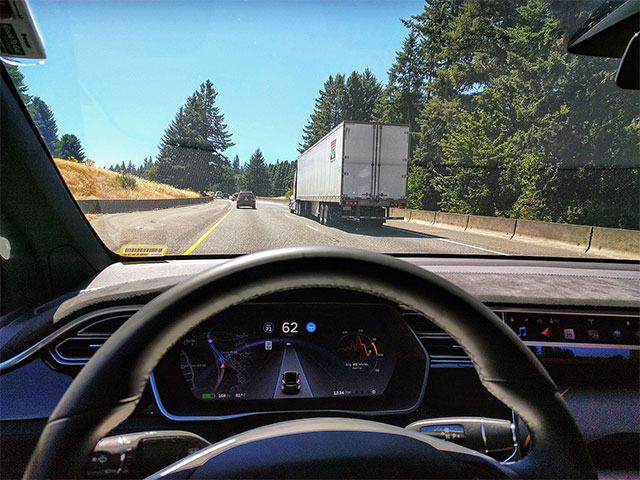Vehicle protection plans can be complicated to understand, and a lot of people aren’t sure exactly what they are. There are a lot of misconceptions about how they work, what they are, and when they are useful.
A vehicle protection plan may be beneficial to customers whose cars are outside of their warranty periods and who want to ensure they can still maintain their cars. They can also be handy for individuals who need various roadside services, including rental vehicles, extensive mileage coverage, and good limits of liability. Vehicle protection plans aren’t the same as extended warranties or car insurance.
A vehicle protection plan can be a valuable asset for many individuals, but how do you know if you could benefit from having one? That’s what we’re going to find out today!
What Is a Vehicle Protection Plan?
A vehicle protection plan, such as those offered by CarGuard Administration, is a plan that covers your car parts and protects you when something goes wrong with your car — usually a breakdown but sometimes general maintenance.
Getting your car repaired can be an extremely stressful time for individuals, and many people fail to plan correctly and then end up frustrated and facing big bills when a part does fail.
There are a lot of myths surrounding car protection plans, including the idea that such plans are a scam and will never help a car owner out of difficulties. That isn’t true, although it is always important to read your contract carefully before you sign it, so you can avoid any potential issues and make sure you are getting a good deal.
Another common myth is that you don’t need such plans if you have insurance, but remember that an insurer will only cover your vehicle repair costs if they are the result of an accident, not standard wear and tear. Insurance does not kick in if your car needs repairs for other reasons.
You’ll also find people who wrongly think that having a vehicle protection plan prevents you from controlling how your car is repaired or what parts are used — this isn’t true in most cases. Many protection plans allow the car’s owner to choose the repair facility from a list of approved suppliers.
It’s also sometimes said that such plans are very expensive and always end up costing more than the value they offer. This often isn’t the case. You do need to pay attention and think about value, but there are lots of good deals out there that can reduce your overall car maintenance costs.
If you’re going to take out a vehicle protection plan from any company, make sure you understand what situations will and will not be covered. Remember, vehicle protection plans aren’t the same as having insurance or an extended warranty, so spend some time thoroughly analyzing what you need and what you will get.
With that in mind, let’s consider a potential option for taking out a vehicle protection plan.
What Sorts of Options Are There at CarGuard?
CarGuard offers a variety of vehicle protection plans to serve its customers, so it’s important to compare the different packages and decide which one is the right one for you. A vehicle protection plan’s key purpose is to cover any maintenance or repairs your car needs when its warranty expires.
That’s why some people get confused and refer to this as an extended warranty — but it isn’t. It’s a separate protection that kicks in once your car’s original warranty is no longer in play. Having this kind of protection can give you significant peace of mind, especially if you anticipate ongoing maintenance costs or mechanical breakdowns with your vehicle.
You get to choose between Platinum, Gold, and Powertrain. Each of these plans provides a different level of coverage for your vehicle and so will appeal to different people.
Platinum protection offers the ultimate protection and covers a wide range of car parts, including:
- A/C
- Fuel system
- Seals; gaskets
- Transmission
- Engine
- Electrical steering components
- Front and rear suspension
- Drive axle
- Cooling system
Gold protection also offers a good degree of coverage and is similar to Platinum, although slightly less extensive. It includes:
- A/C
- Fuel system
- Transmission
- Engine
- Electrical components
- Front and rear suspension
- Drive axle
- Cooling system
Powertrain protection is a more basic option and doesn’t cover as much but will still help with:
- Turbo supercharge
- Transfer case
- Drive axle
- Engine
- Transmission
Unsurprisingly, Powertrain is the most affordable vehicle protection plan that CarGuard provides, but it doesn’t offer the degree of coverage that you get with the other plans. You will need to weigh your needs and the costs carefully to make a good decision.
All of the plans include roadside assistance, a rental vehicle, and other coverage for breakdowns and emergencies. They also come with a limited liability of $12,500 or the actual cash value — and you’ll get whichever is the greater number.
That means that no matter what you need, you’ll find a vehicle protection plan to suit you.
Conclusion
If you’re looking to purchase a vehicle protection plan, CarGuard Administration has some good choices that you may find meet your needs. It’s a cost-effective option that many individuals find useful, and it can provide you with significantly more peace of mind, as well as roadside coverage and a rental car for those emergency moments when you need help.















